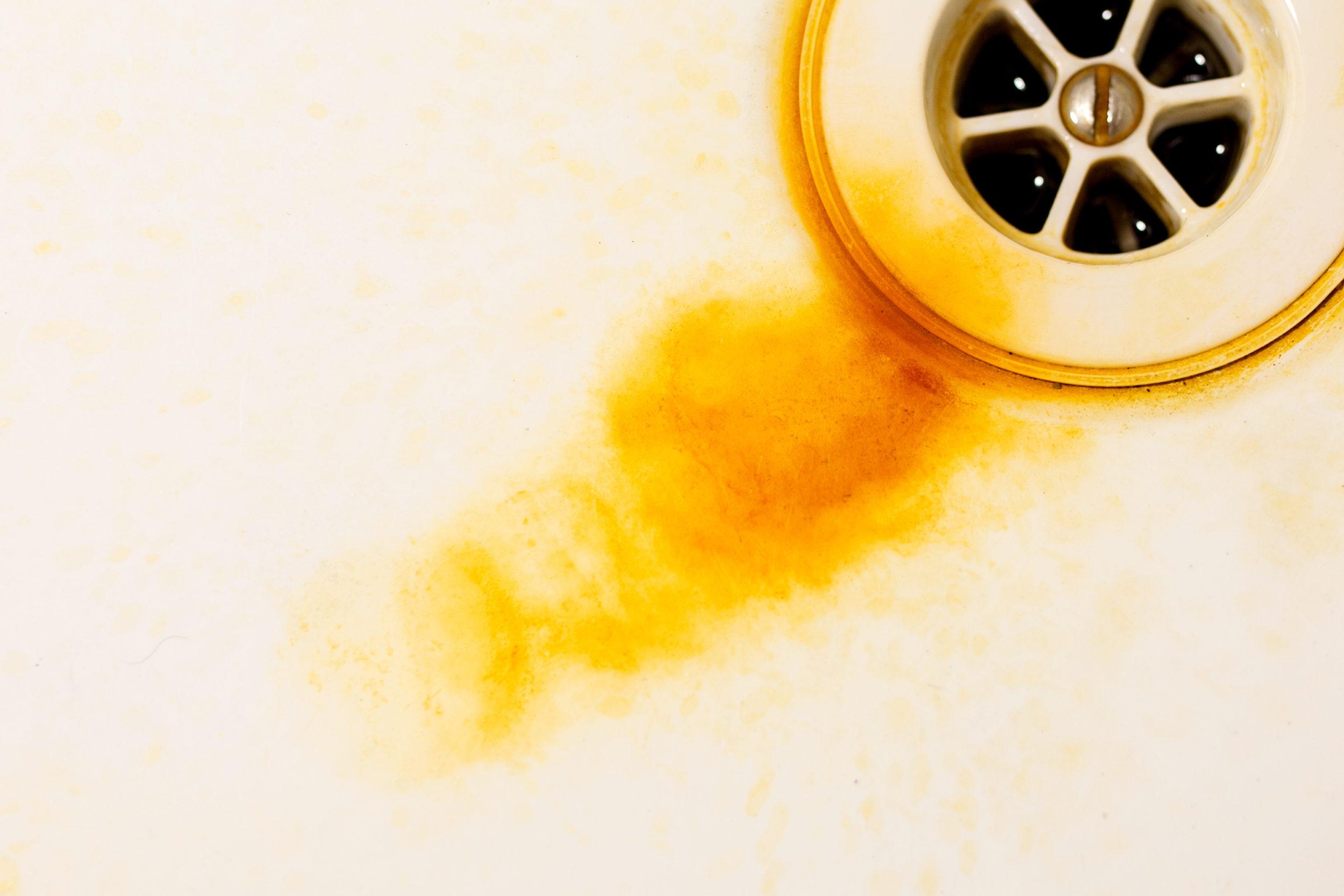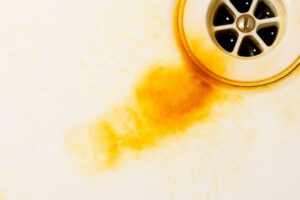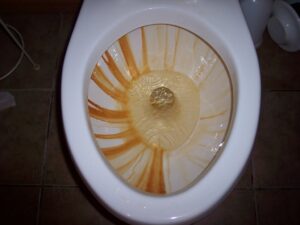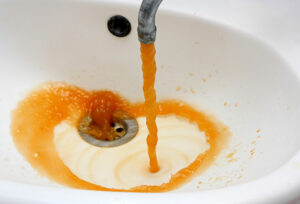Currently Empty: R0.00

What is Iron and what does its presence in water mean?
Effects of Iron In Drinking Water – Iron is the most common metallic element in the universe. When pure it is a dark, silver-gray metal. It is a very reactive element and oxidizes (rusts) very easily. The reds, oranges, and yellows seen in some soils, and on rocks are probably iron oxides. Iron is the third most common element in making up the Earth. Iron is one of the three naturally magnetic elements; the others are cobalt and nickel. Iron is the most magnetic of the three.
Iron can be a troublesome chemical in water supplies. Making up at least 5 percent of the earth’s crust, iron is one of the earth’s most plentiful resources. Rainwater as it infiltrates the soil and underlying geologic formations dissolve iron, causing it to seep into aquifers that serve as sources of groundwater for wells. Although present in drinking water, iron is seldom found at concentrations greater than 10 milligrams per liter (mg/L) or 10 parts per million. However, as little as 0.3 mg/l can cause water to turn a reddish-brown color.
Iron is mainly present in water in two forms: either soluble ferrous iron or insoluble ferric iron. Water containing ferrous iron is clear and colorless because the iron is completely dissolved. When exposed to air in the pressure tank or atmosphere, the water turns cloudy and a reddish-brown substance begins to form. This sediment is the oxidized or ferric form of iron that will not dissolve in water.
Are There Any Healthy Risks With The Presence Of Iron In Water?
Iron is not hazardous to health, but it is considered a secondary or aesthetic contaminant. Essential for good health, iron helps transport oxygen in the blood. Most tap water in the United States supplies approximately 5 percent of the dietary requirement for iron.
Test Your Water
If there is an iron problem with the water supply, the first step is to determine the source. The source of iron may be from the corrosion of iron or steel pipes or other components of the plumbing system where the acidity of the water, measured as pH, is below 6.5.
Laboratory analysis of water to determine the extent of the iron problem and possible treatment solutions should begin with tests for iron concentration, iron bacteria, pH, alkalinity, and hardness. A water sample kit can be obtained from a certified laboratory. The laboratory’s instructions for collecting the water sample should be followed. Collect the sample as close to the well as possible.
If the source of water is a public water system and you experience iron-related problems, it is important to contact a utility official to determine whether the red water is from the public system or from the home’s plumbing or piping.
Stains and Deposits
Concentrations of iron as low as 0.3 mg/L will leave reddish-brown stains on fixtures, tableware, and laundry that are very hard to remove. When these deposits break loose from water piping, rusty water will flow through the faucet.
How To Treat/Reduce Iron In Water
Depending on the level of Iron in the water, the methods of treating Iron in water can differ. The most known method is using DMi-65 Iron removal Media.
DMI–65 is a revolutionary Advanced Oxidation Catalytic Filtration Media designed for the removal of iron and manganese. DMI–65 Infusion Technology increases the micro-porous catalytic surface area, efficiently removing more dissolved iron and manganese to as low as 0.001 ppm.
It is an extremely powerful catalytic water filtration media that is designed for the removal of iron and manganese in aqueous solutions (water) without the need for potassium permanganate or chemical regeneration. The unique microporous structure of DMI-65 efficiently removes dissolved iron to almost undetectable levels as low as 0.001 ppm and manganese to 0.001 ppm. DMI-65 acts as an oxidation catalyst with immediate oxidation and filtration of the insoluble precipitates derived from this oxidation reaction. DMI-65 can also remove Arsenic, Aluminium, and other heavy metals and Hydrogen Sulphide under certain conditions.













